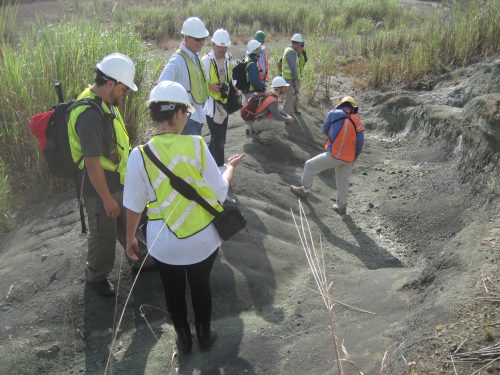We arrived in bustling Panama City at the beginning of the fourth meeting of the Network for Neotropical Biogeography, or NNB4. On day one of the conference participants had the opportunity to sign up for any of several excursions, one of which was a field trip to the canal facilitated by Jorge along with Bruce MacFadden and Doug Jones, two of the principal investigators on the PCP-PIRE grant. We interns got to tag along with extra rock hammers and brushes, taking mental notes on the barage of information that came from presenters and participants. As we took in our first sight of the localities where we have since spent many an hour prospecting, quarrying and excavating, Bruce described for the conference-goers the arduousness of the task before us. He talked about the 5 am wake-ups, the pervasive muggy heat, the thousands of hours previous intern cohorts had poured into the Canal. And how little there was to show for it! On a good day, we were told, we would find one or two teeth with perhaps a couple of bone fragments. As the sun rose higher and my shirt became soaked with sweat, my optimistic hopes for this internship were likewise dampened. I went to bed that night wondering where exactly I would find the motivation to make it through the four months to come.

The next day we filed into the auditorium at STRI’s Tupper campus, where from nine to five (with coffee breaks, of course) we heard presentations from many of the best minds in neotropical research, on everything from tectonics to plant evolution. As the day wore on, I felt my excitement for the project returning. From a few fossils, whole phylogenies emerged. Early versions of the isthmus were drawn and redrawn. Animals wandered back and forth between continents. Several of the presentations even featured research based on fossils found by previous Panama Canal interns, and called for us to bring them more data.
As the last three weeks have unfolded, we’ve experienced our share of muggy days, sharp elephant grass, empty sample bags. It’s true that on a good day we might find a molar or two, and on some days we find nothing at all. But from those few fossils we do find–those tiny pieces of shiny black, looking for all the world like little more than oddly shaped pebbles–come momentous revelations.